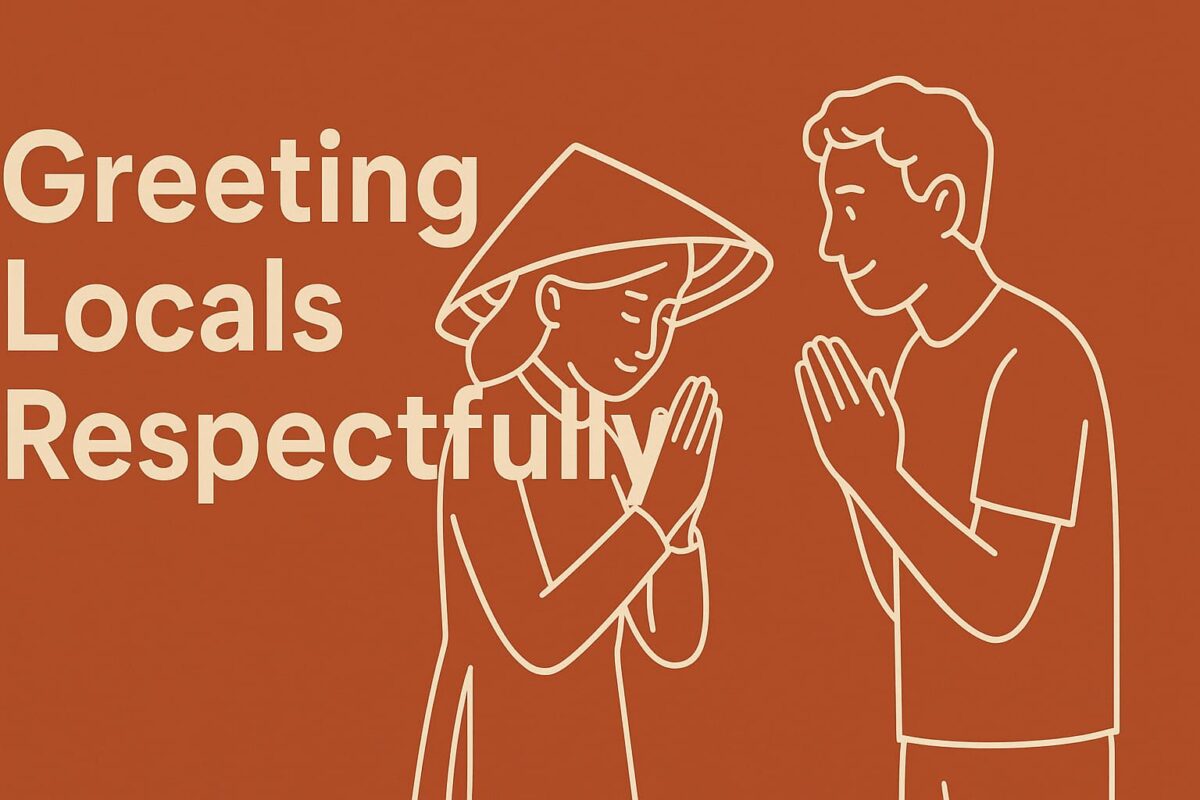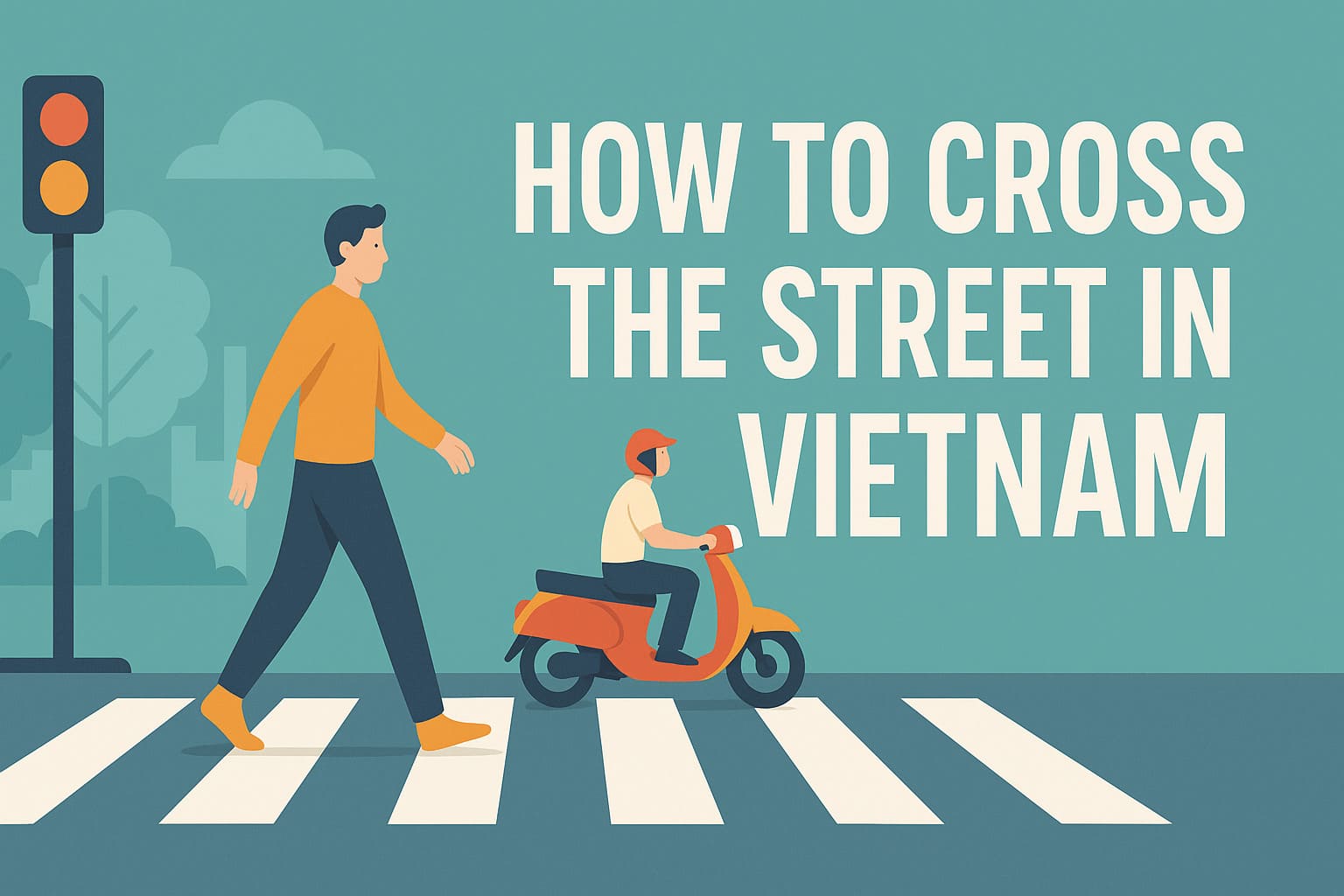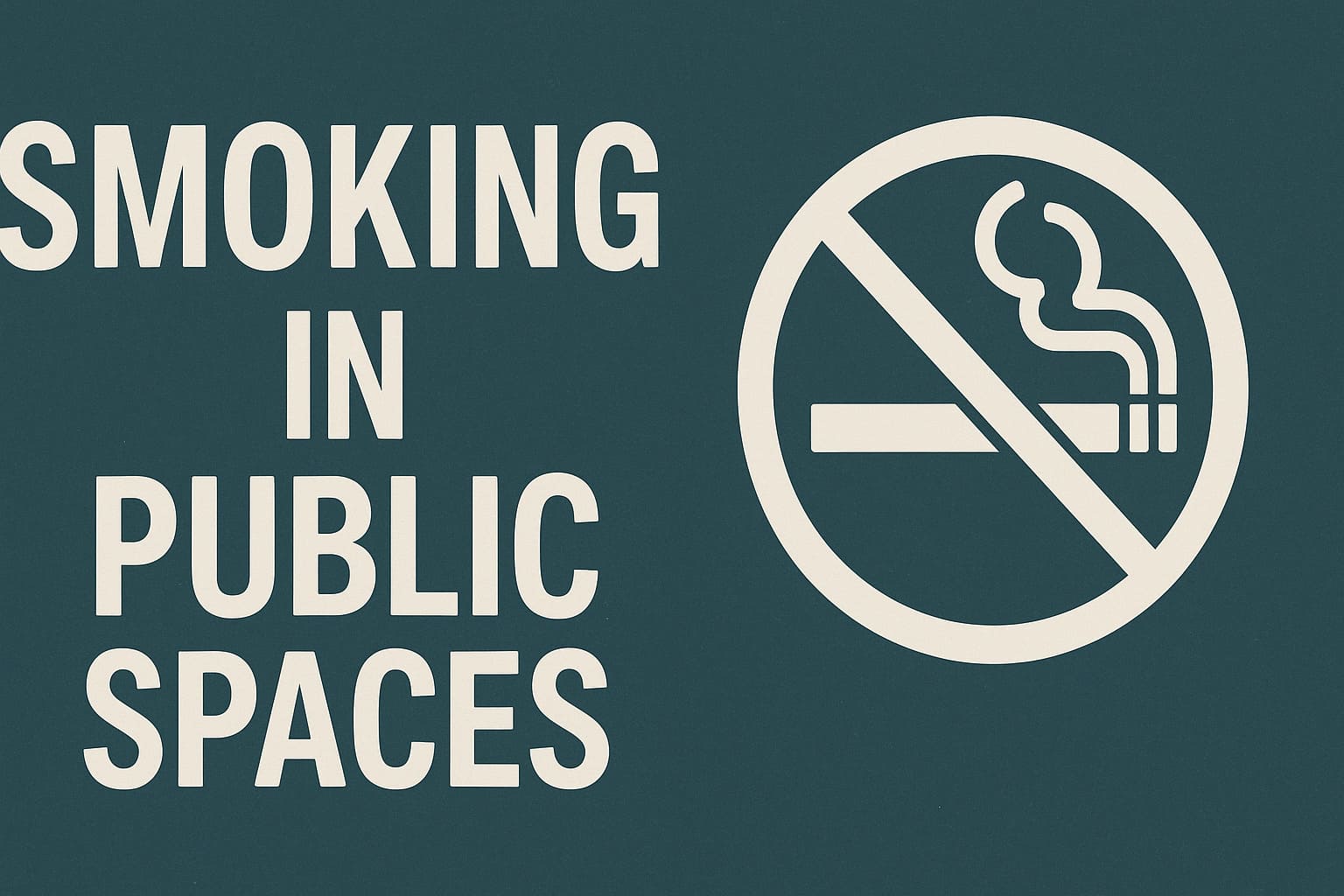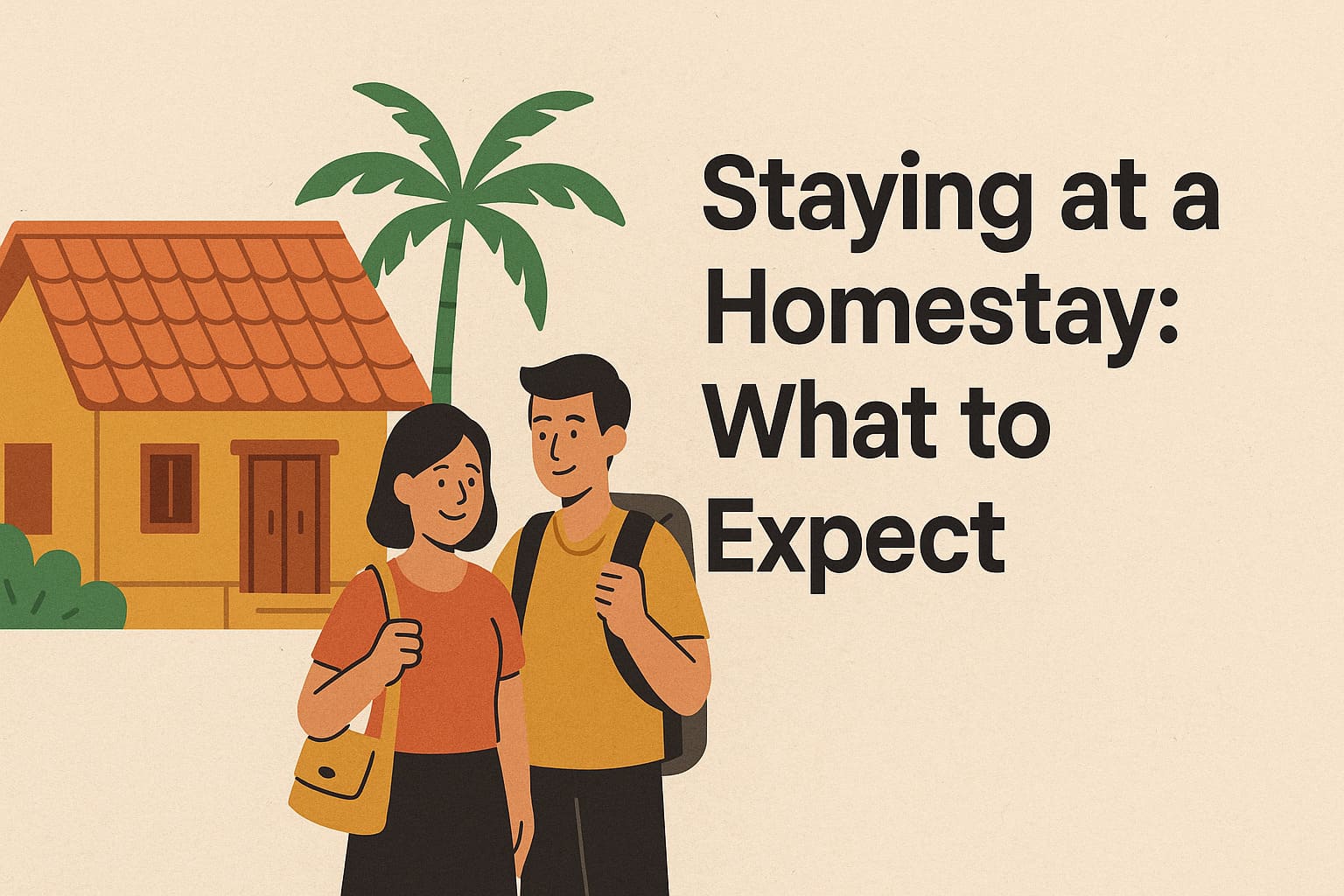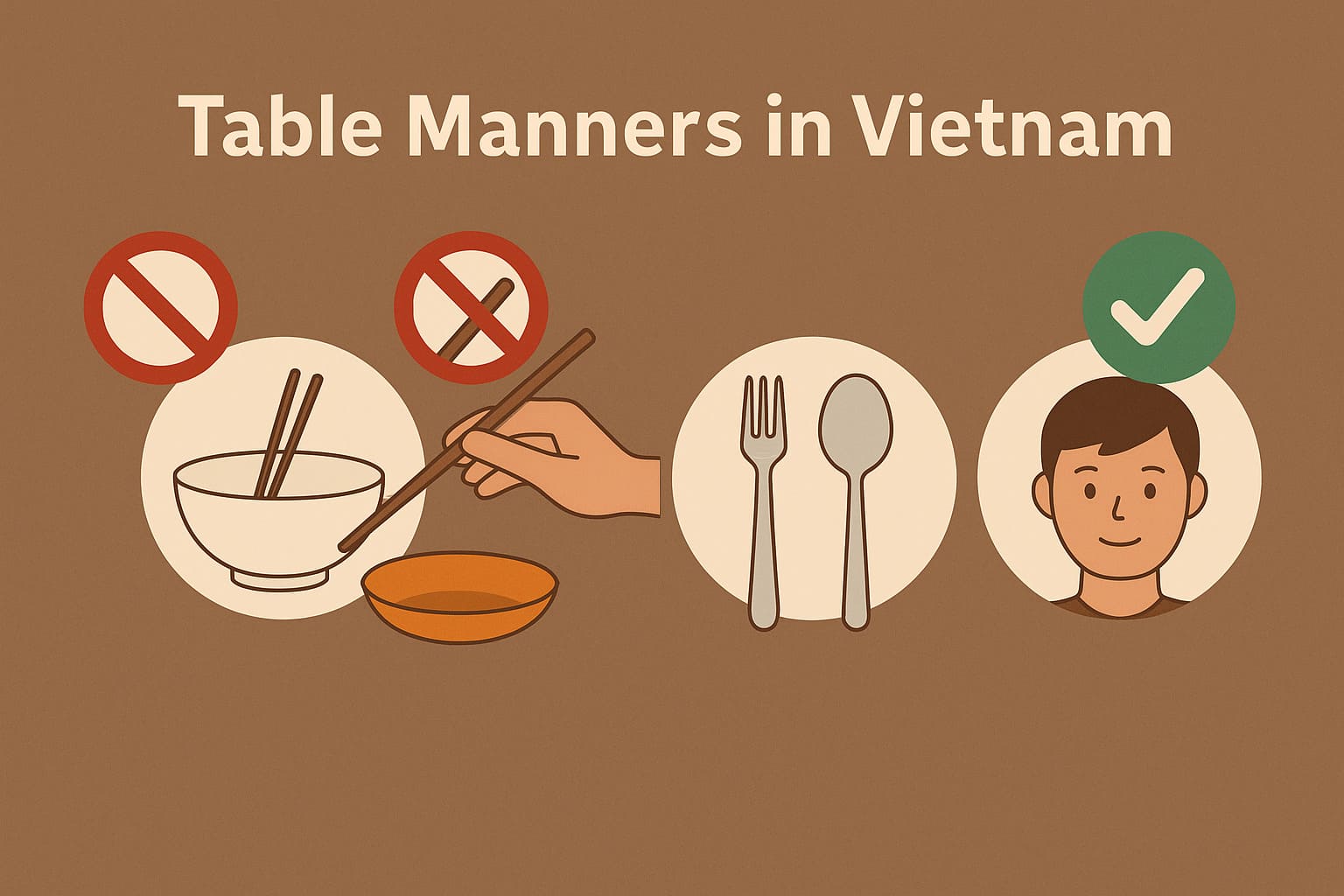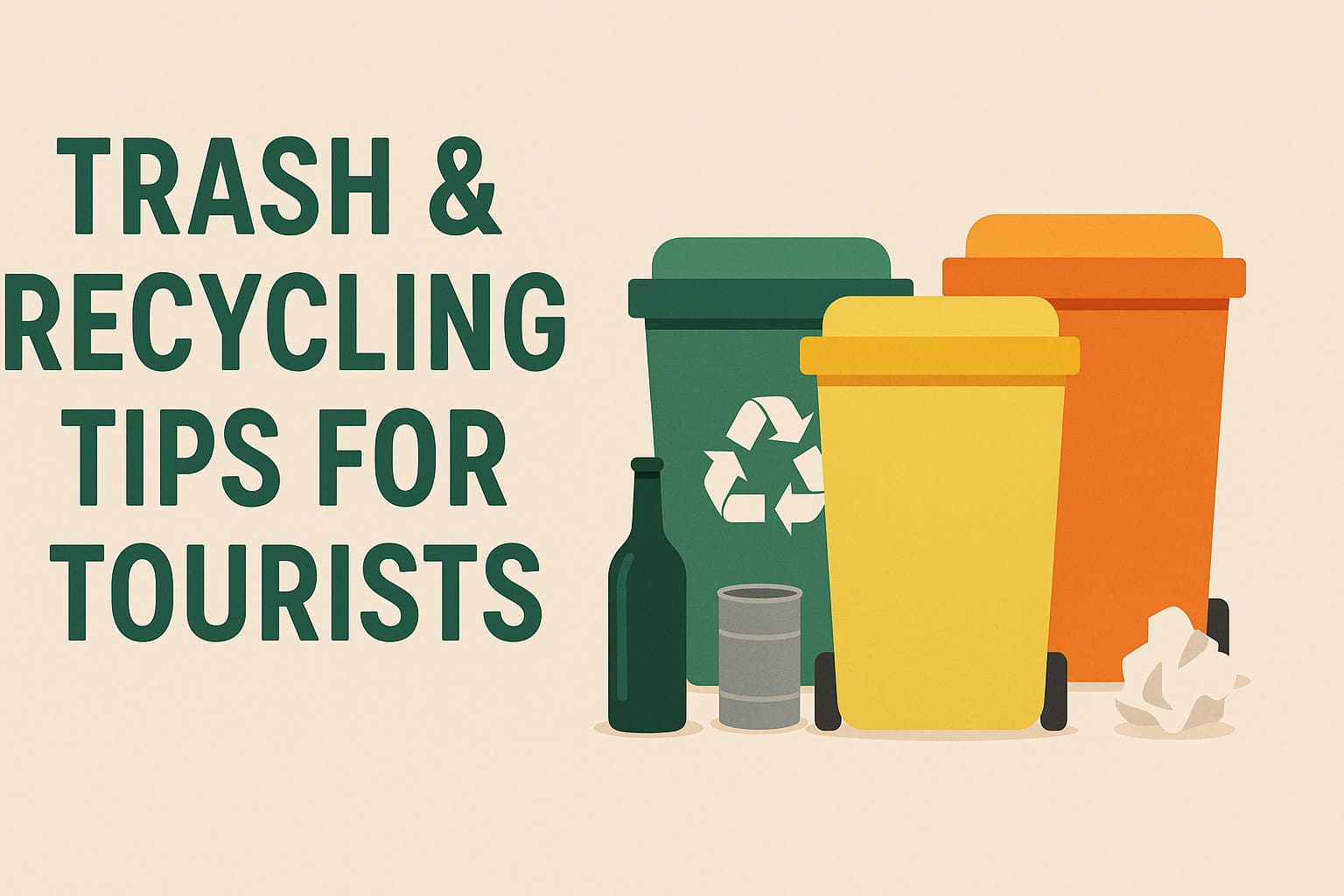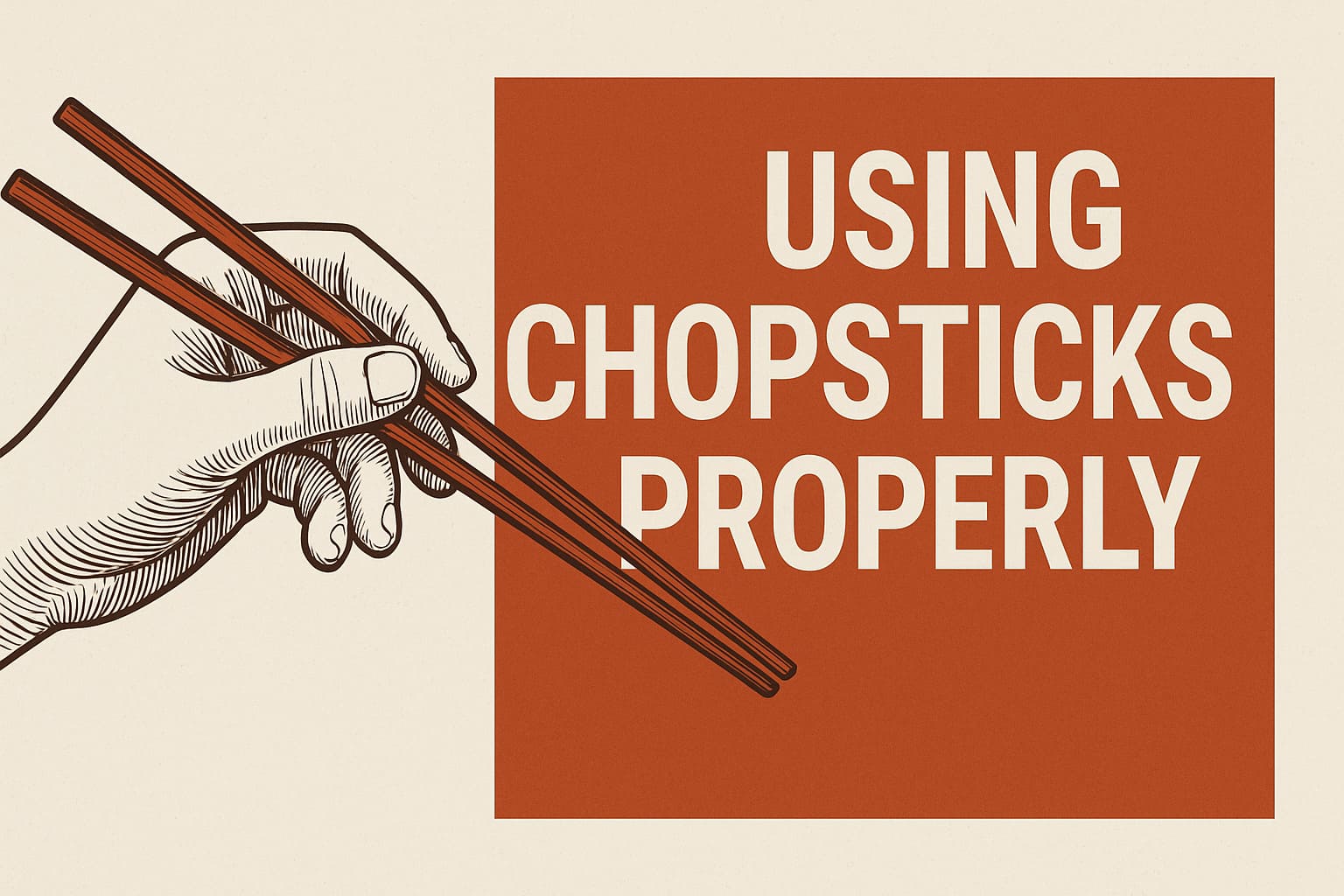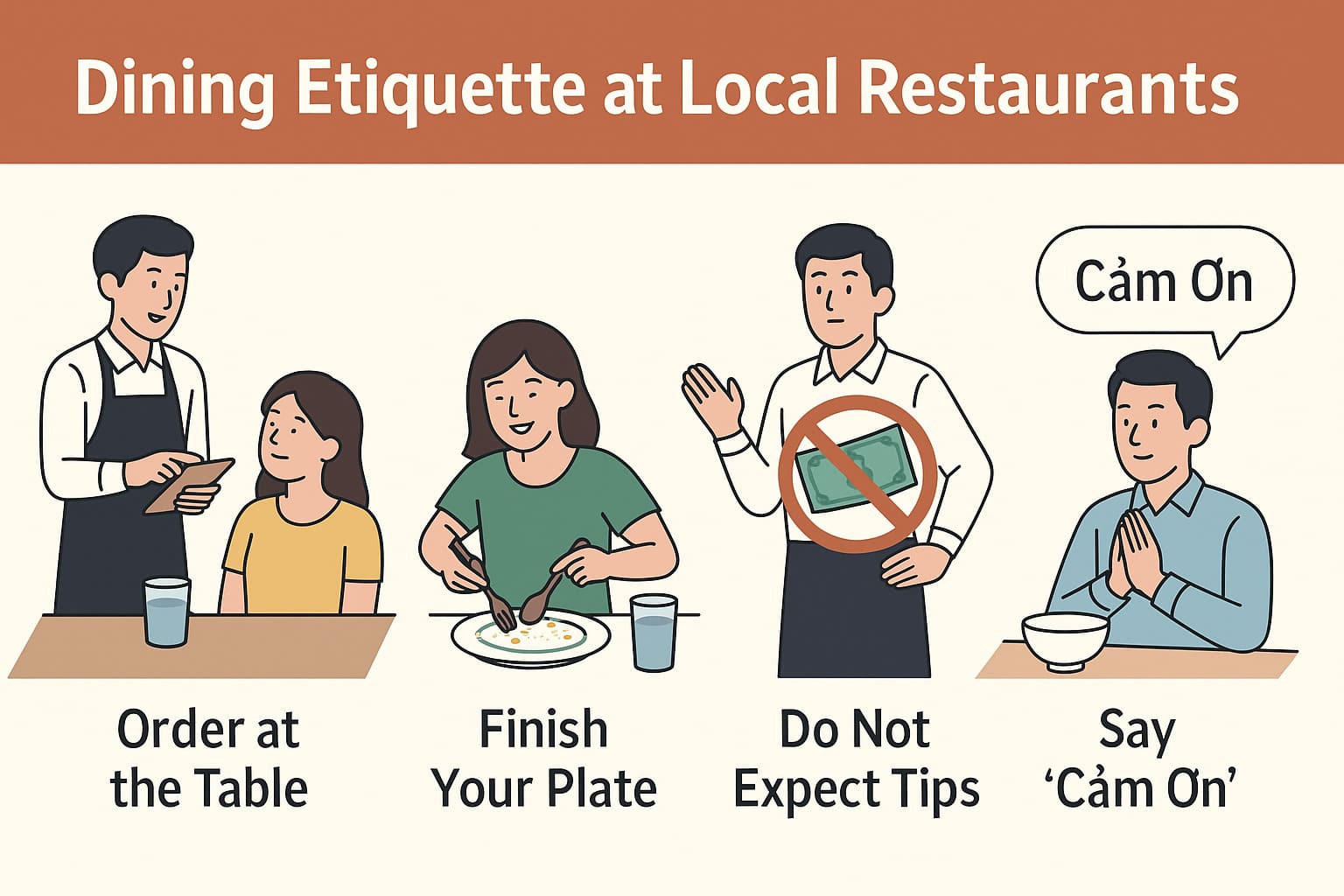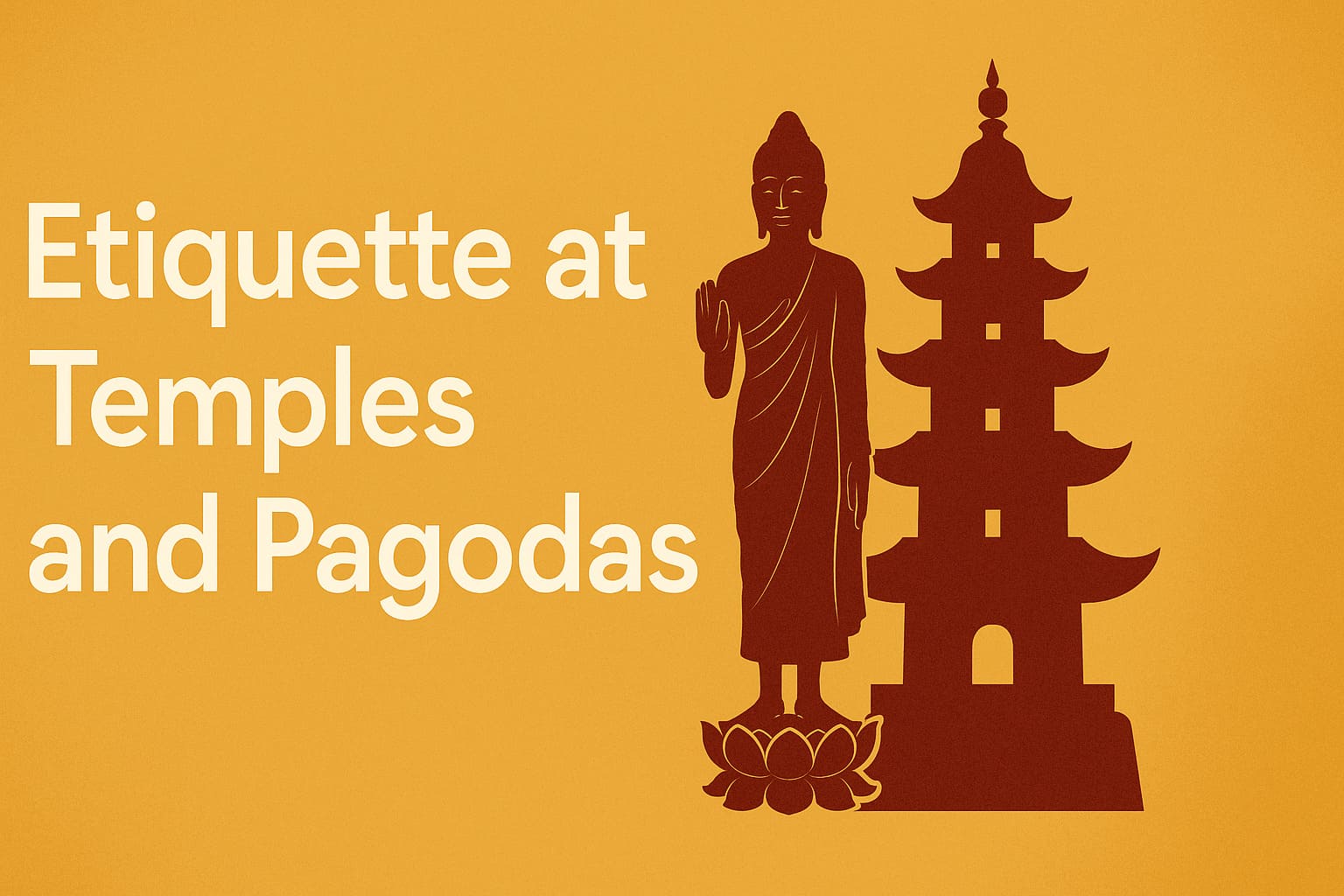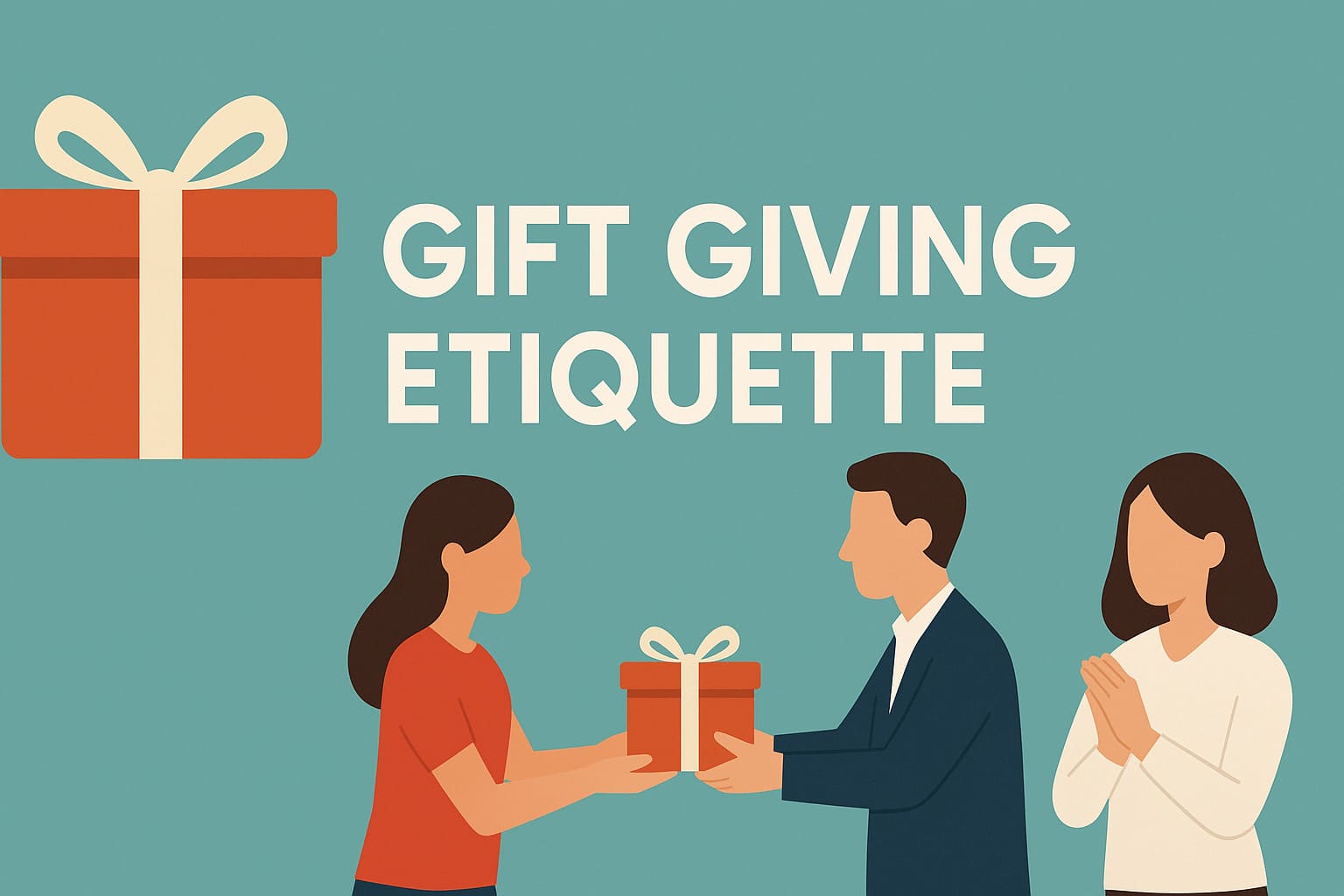In Vietnam, greetings are more than just polite phrases to start a conversation — they are a way to show respect, courtesy, and goodwill. Understanding local greeting customs can help visitors integrate more easily, avoid misunderstandings, and create positive impressions with locals.
Common Ways to Say Hello
Vietnamese greetings are simple but reflect nuances in age and social relationships:
- “Xin chào” – A polite, neutral greeting that can be used in almost any situation. Suitable for both strangers and acquaintances.
- “Chào” + personal pronoun – This format adds a touch of familiarity and respect depending on age and gender:
- “Chào anh” – for an older man
- “Chào chị” – for an older woman
- “Chào em” – for someone younger than you
💡 Tip: Always pair your greeting with a friendly smile and gentle eye contact to make the interaction warm and welcoming.
Gestures and Body Language
In addition to words, body language plays an important role in Vietnamese communication:
- A slight bow of the head – Shows respect, especially when greeting elders or those in higher positions.
- Handshake – Common in formal settings or first-time meetings. It’s best to let the elder or a woman offer their hand first before reaching out.
- Avoid hugs or kisses on the cheek – Unless you are very close with the person, this may be seen as inappropriate in Vietnamese culture.
How to Use Personal Pronouns
A distinctive aspect of Vietnamese communication is using pronouns based on age and relationship, rather than defaulting to “I” and “you” like in English.
| Pronoun | When to use |
|---|---|
| Anh | For a man older than you |
| Chị | For a woman older than you |
| Em | For someone younger than you |
| Ông / Bà | For someone significantly older |
👉 Helpful Tip: If you’re unsure which pronoun to use, politely ask:
“Cháu/em nên xưng hô thế nào cho đúng ạ?”
(“How should I address you properly?”)
Useful Vietnamese Phrases for Greeting
| Vietnamese Phrase | English Equivalent |
|---|---|
| Xin chào | Hello |
| Chào buổi sáng | Good morning |
| Chào buổi chiều | Good afternoon |
| Chào buổi tối | Good evening |
| Tạm biệt | Goodbye |
| Cảm ơn | Thank you |
| Xin lỗi | Sorry / Excuse me |
These phrases are useful when visiting restaurants, hotels, markets, or engaging with locals during your travels.
✅ Conclusion
Greeting people the right way in Vietnam is not only about courtesy — it’s a gateway to deeper cultural understanding and genuine connections. A simple smile, the correct pronoun, and a respectful gesture can open doors and enrich your travel experience.
So, whether you’re navigating a bustling market in Hanoi or checking into a homestay in the Mekong Delta, remember: kindness and cultural awareness go a long way.


